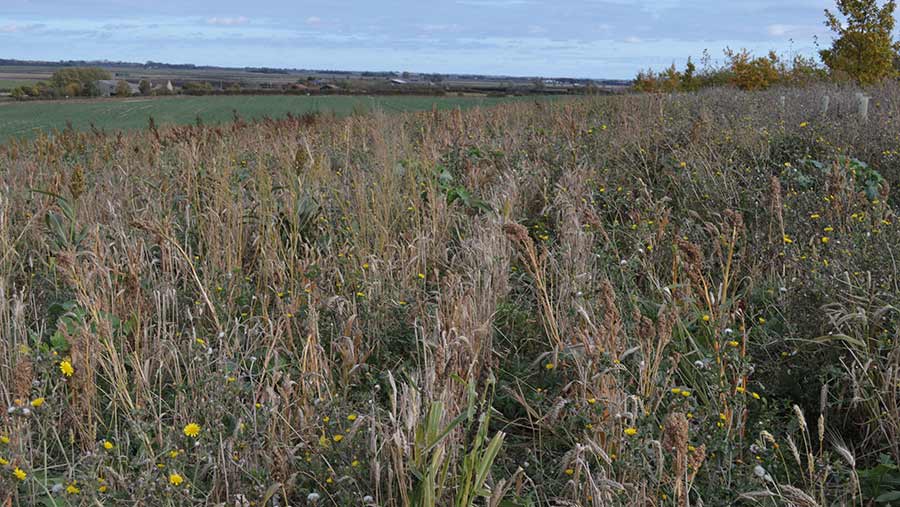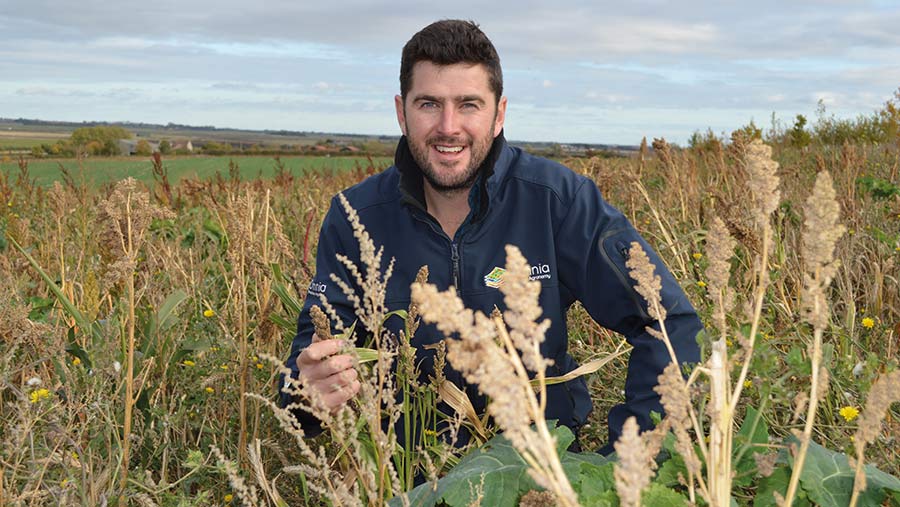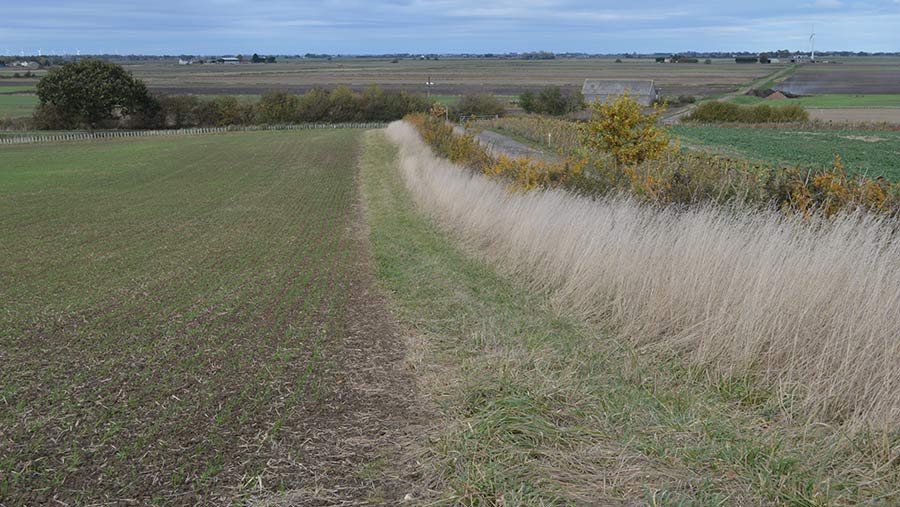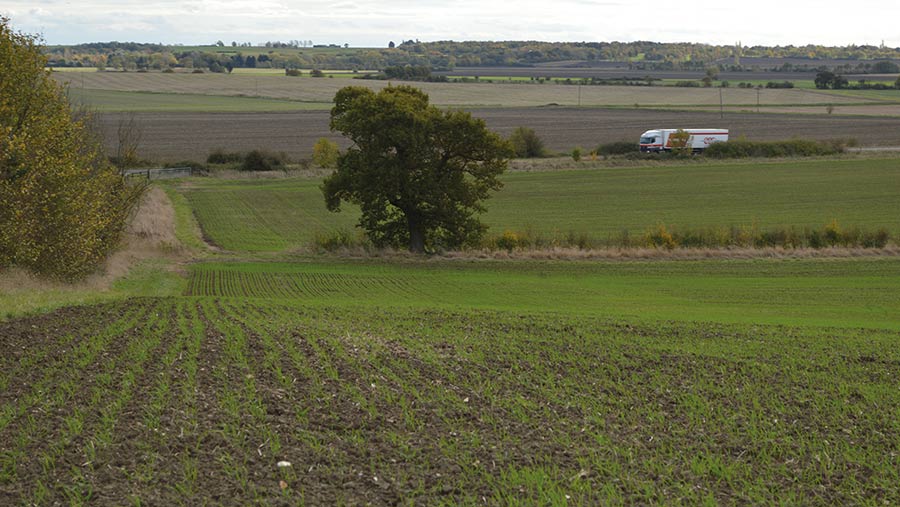How arable growers can qualify for new SFI soil payment scheme
 © MAG/David Jones
© MAG/David Jones Most arable growers should be able to qualify for a £40/ha payment from the first tier of a new environmental scheme by looking after their soils and so helping to offset the fall in area-based subsidies.
By adopting techniques such as growing cover crops and adding organic matter on some parts of their farms, growers can gain this “intermediate” payment level under the new Environmental Land Management (ELM) scheme.
Matt England, environmental specialist with agronomy group Hutchinsons, says with the first cuts being made to the area-based Basic Payment Scheme (BPS) this year, growers must try to fill this funding gap.
“Most arable growers should be able to achieve this intermediate level of funding of £40/ha without drastic changes to their farming systems,” he says.
See also: Almost 1,000 farmers apply for SFI pilot scheme
Open to all growers
In the first tier of the ELM scheme, known as the Sustainable Farming Incentive (SFI), this arable and horticultural soils standard with an intermediate level of payment of £40/ha will be open to all growers early in 2022, with payments made quarterly, three months after agreements start.
On his 190ha family farm in Cambridgeshire, Mr England says this £40/ha payment would bring in £7,600, helping to offset some of the early decline in BPS for the farm.

Matt England © MAG/David Jones
BPS rates for 2020 were set at £233.30/ha, but reductions are in place for 2021, with the last money set to be paid in 2027, and BPS gone completely by 2028.
All money taken from BPS is being redirected to other payment schemes, so farm support in England for the duration of this parliament, which can stretch up to December 2024, stays at £2.6bn.
PF England & Son, Broadpool farm, Warboys, Cambridgeshire |
|
| 2020 | BPS £44,270 |
| 2022 | BPS £34,707 plus SFI soil intermediate standard £7,600 = £42,307 |
There are additional costs to achieve this £40/ha payment, such as testing for soil organic matter every five years, drawing up a soil management plan, adding manures and growing cover crops, but many growers will already be undertaking some or all of these techniques.
There is also an introductory payment at £22/ha with less onerous standards, while an advanced payment, initially put at £60/ha, has been delayed until 2023.
It will include use of no-tillage techniques, but this payment will only be available to those in the SFI pilot scheme.

© MAG/David Jones
Introduction of standards into the Sustainable Farming Incentive – 2022-25
2022 (confirmed)
- Arable and horticultural soils
- Improved grassland soils
- Moorland and rough grazing (introductory level)r
- Annual health and welfare review
2023 (indicative)
- Nutrient management
- Integrated pest management
- Hedgerows
2024 (indicative)
- Agroforestry
- Low- and no-input grassland
- Moorland and rough grazing (all levels)
- Waterbody buffering
- Farmland biodiversity
2025 (indicative)
- Organic
- On-farm woodland
- Orchards and specialist horticulture
- Heritage
- Dry stone walls
Key advanced level elements
There are four key elements to meeting this £40/ha intermediate level of the soils standard:
- Test soil organic matter
- Produce a soil management plan
- Achieve a 70% winter cover (December to February) to protect soil. This can include winter cereals, oilseed rape or cover crops, but this must include land with multi-species green cover – covering at least 20% of land
- Addition of organic matter to one-third of land each year. This can include manures, cover crop or chopped straw.
Growers could fairly easily comply with these agronomic practices by growing winter cereals or oilseed rape, and chopping some straw, but neither would have a big positive effect on soil health, so Mr England suggests going further to really improve soils.
“This is an opportunity for growers to embrace some regenerative agriculture techniques, and get paid for them with not a great deal of extra work,” he says.
On his family farm, winter cereals and oilseed rape could count towards the 70% green winter cover, and the main challenge will be to grow a multispecies cover crop across 20% of the farm.
If 20% of the farm was put down to cover crops, that would be an area of 38ha at a seed cost of, say £30/ha, resulting in a cover crop seed outlay of £1,140 to gain the overall £7,600 farm payment.

© MAG/David Jones
The Cambridgeshire farm is spit roughly 50-50 between heavy clay-based soils and Grade 1 fenland. The heavier side of the farm grows oilseed rape, winter wheat, spring barley and winter beans.
The fen soils grow winter wheat and sugar beet, and land is rented out for potatoes, onions and vining peas.
The cover crops would fit especially well ahead of spring barley on the heavier clay soils, which have inherently low organic matter, Mr England says.
There is also a mirror image scheme for grassland called the Improved Grassland Soils Standard, where payments are offered at either an introductory level of £28/ha or intermediate level of £58/ha.
There are also three other indicative options for 2023 which include nutrient management, integrated pest management and hedgerows.
There are 938 farmers taking part in an SFI pilot scheme, but Mr England is not part of the pilot, as his farm is signed up to a Countryside Stewardship scheme.
The SFI is the first of three ELM scheme tiers, with the other two being Local Nature Recovery and Landscape Recovery, which are aimed at groups of farmers or organisations, rather than individual farmers, and targeted at specific environmental issues

